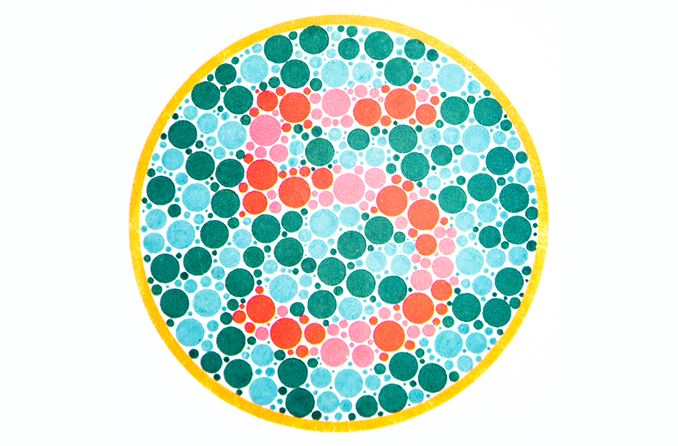Red-green color blindness

Red-green color blindness is the most common variety of color deficiency in humans. It happens to people who can’t see shades of red and green the same way as people with normal color perception do.
Most of us experience color about the same way: Our eyes capture light in certain wavelengths. Then, the brain interprets these waves as shades of red, green and blue. But a few people have trouble seeing red and green, and some see no red or green at all. Otherwise, their vision works pretty much the same as anybody else’s.
About 8% of men and 0.5% of women worldwide have trouble perceiving color accurately. Almost all of those problems are in red-green perception. Indeed, seeing reds and greens comes so naturally to humans that problems with color perception pose a bunch of questions:
What’s the definition of red-green color blindness?
What causes red-green color deficiencies?
What are the most common varieties of red-green color blindness?
What does a red-green color deficiency look like?
How do doctors confirm red-green color blindness?
Is there any treatment or cure for red-green color deficiencies?

